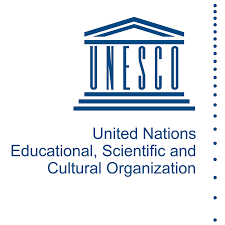Description

Copyright infringement not intended
In News: India has been elected as a member of the Intergovernmental Committee of UNESCO’s 2003 Convention for the Safeguarding of the Intangible Cultural Heritage for the 2022-2026 cycle.
Details:
- Against the four seats falling vacant within the Asia-Pacific group, six countries, namely, India, Bangladesh, Vietnam, Cambodia, Malaysia, and Thailand had presented their candidature.
- India received 110 votes from the 155 State Parties that were present and voting.
- The Intergovernmental Committee of the 2003 Convention consists of 24 members and is elected in the General Assembly of the Convention according to the principles of equitable geographical representation and rotation. States Members to the Committee are elected for a term of four years.
- Some of the core functions of the Intergovernmental Committee include promoting the objectives of the Convention, providing guidance on best practices, and making recommendations on measures for the safeguarding of intangible cultural heritage.
- The Committee also examines requests submitted by States Parties for the inscription of intangible heritage on the Lists as well as proposals for programmes and projects.
- In the past, India has served two terms as a member of the Intergovernmental Committee of this Convention. One from 2006 to 2010 and the other from 2014 to 2018.
- For its 2022-2026 term, India has formulated a clear vision for the protection and promotion of the intangible cultural heritage of humanity.
- Some of the priority areas that India will focus upon include fostering community participation, strengthening international cooperation through intangible heritage, promoting academic research on intangible cultural heritage, and aligning the work of the Convention with the UN Sustainable Development Goals.
- India ratified the 2003 Convention for the Safeguarding of the Intangible Cultural Heritage in September 2005.
- With 14 inscriptions on the Representative List of Intangible Cultural Heritage of Humanity, India also ranks high in the listing of intangible cultural heritage. After the inscription of Durga Puja in 2021, India submitted the nomination for Garba of Gujarat to be discussed in 2023.
Recent developments:
- The 16th Committee of UNESCO for safeguarding of the Intangible Cultural Heritage (ICH) in its meeting held in Paris has inscribed DURGA PUJA in KOLKATA on the representative list of Intangible Cultural Heritage of Humanity.
- This is the 1st festival in Asia to achieve recognition as UNESCO ICH of Humanity.
- UNESCO’s list of intangible culture is an annual list which focuses on those forms of performing art which are of outstanding value but are vulnerable due to lack of support.
- Convention for the Safeguarding of the Intangible Cultural Heritage was adopted in 2003. India ratified it in 2007.
- In total, 14 Intangible Cultural Heritage elements from India have now been inscribed on UNESCO’s Representative List.
List of the Intangible Cultural Heritage of Humanity
- UNESCO established it‘s Lists of Intangible Cultural Heritage with the aim of ensuring better protection of important intangible cultural heritages worldwide and the awareness of their significance.
- The list was established in 2008 when the 2003 Convention for the Safeguarding of the Intangible Cultural Heritage took effect.
13 other elements apart from Durga Puja

What is UNESCO?
- UNESCO is the United Nations Educational, Scientific and Cultural Organization. It seeks to build peace through international cooperation in education, sciences and culture. UNESCO's programmes contribute to the achievement of the Sustainable Development Goals defined in the 2030 Agenda, adopted by the UN General Assembly in 2015.
- As early as 1942, in wartime, the governments of the European countries, which were confronting Nazi Germany and its allies, met in the United Kingdom for the Conference of Allied Ministers of Education (CAME).
- World War II was far from over, yet those countries were looking for ways and means to rebuild their education systems once peace was restored.
- The project quickly gained momentum and soon acquired a universal character.
- New governments, including that of the United States, decided to join in. Upon the proposal of CAME, a United Nations Conference for the establishment of an educational and cultural organization (ECO/CONF) was convened in London from 1 to 16 November 1945.
- Scarcely had the war ended when the conference opened. It gathered together representatives of forty-four countries who decided to create an organization that would embody a genuine culture of peace.
- In their eyes, the new organization was to establish the “intellectual and moral solidarity of mankind” and thereby prevent the outbreak of another world war.
https://www.pib.gov.in/PressReleasePage.aspx?PRID=1839891
1.png)















